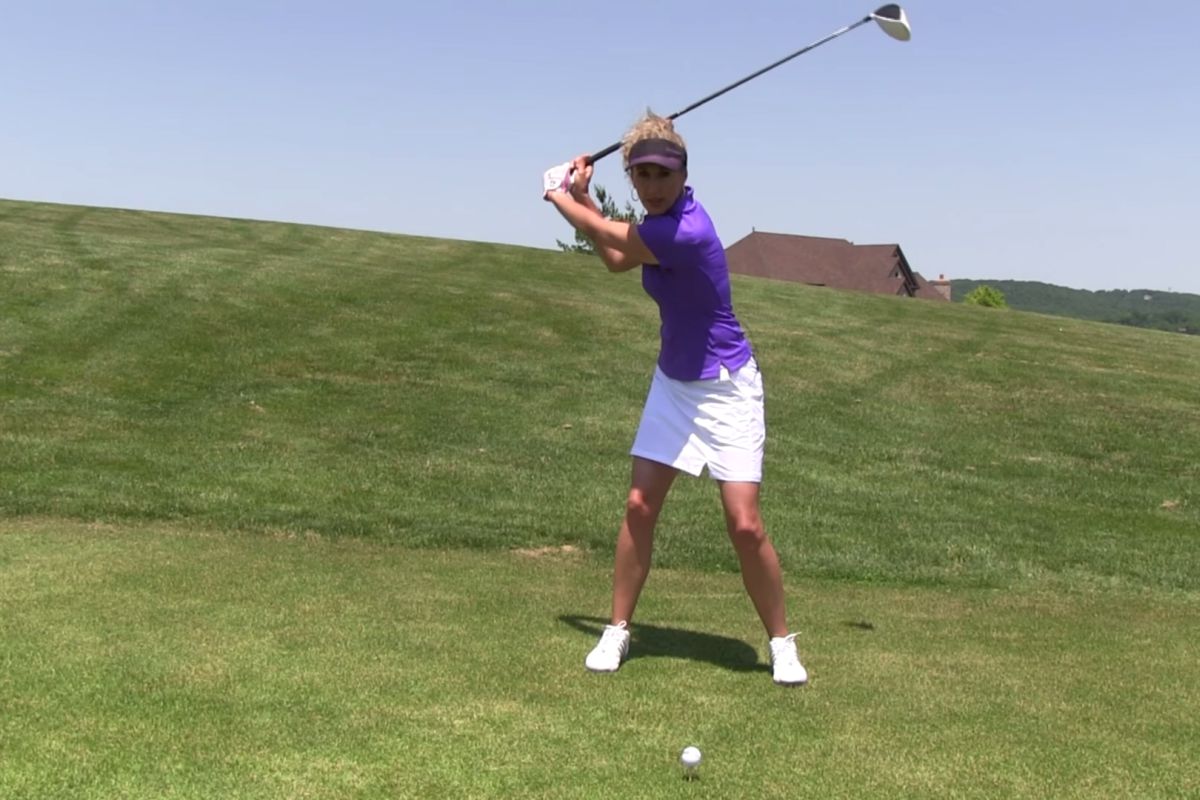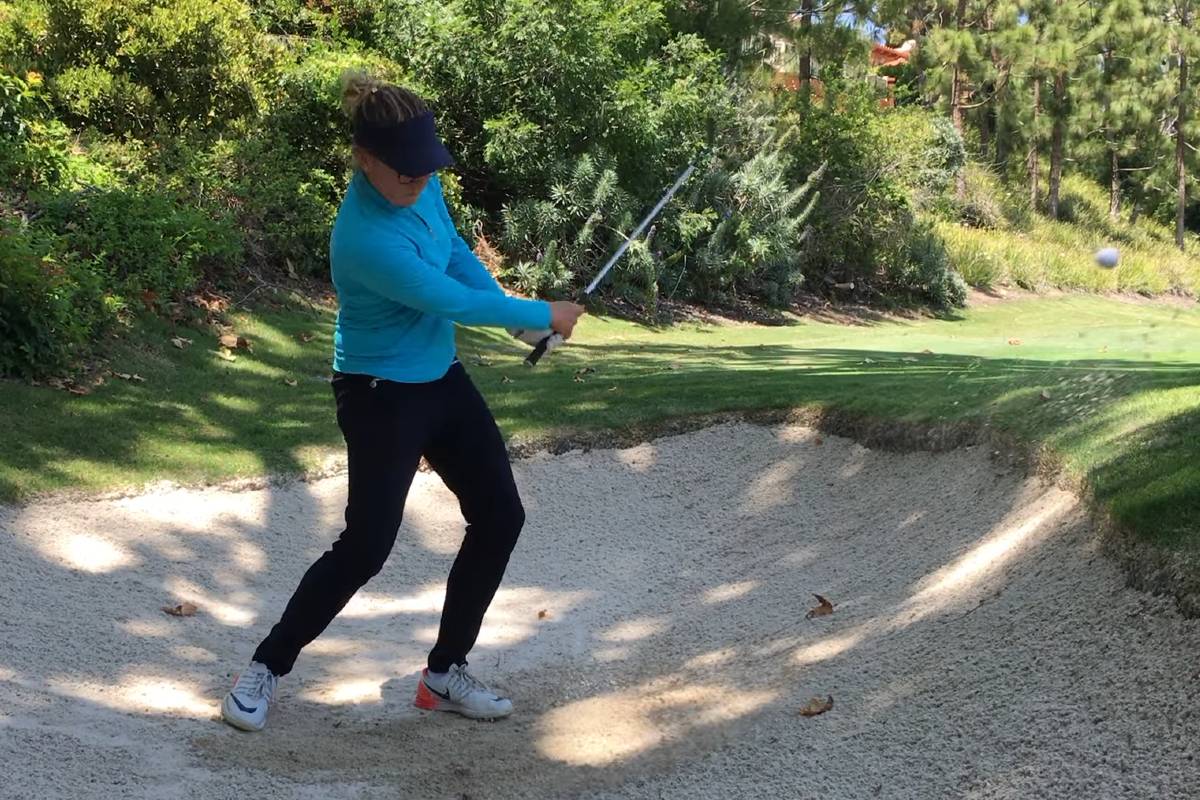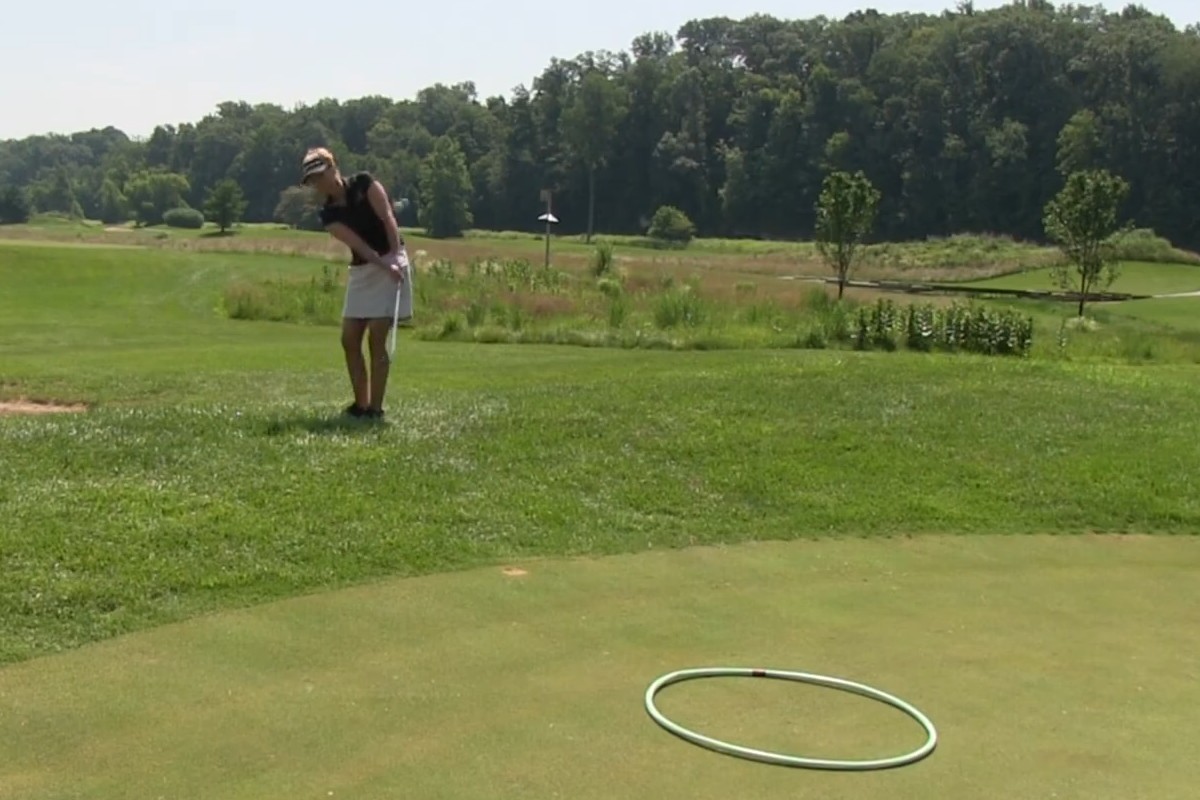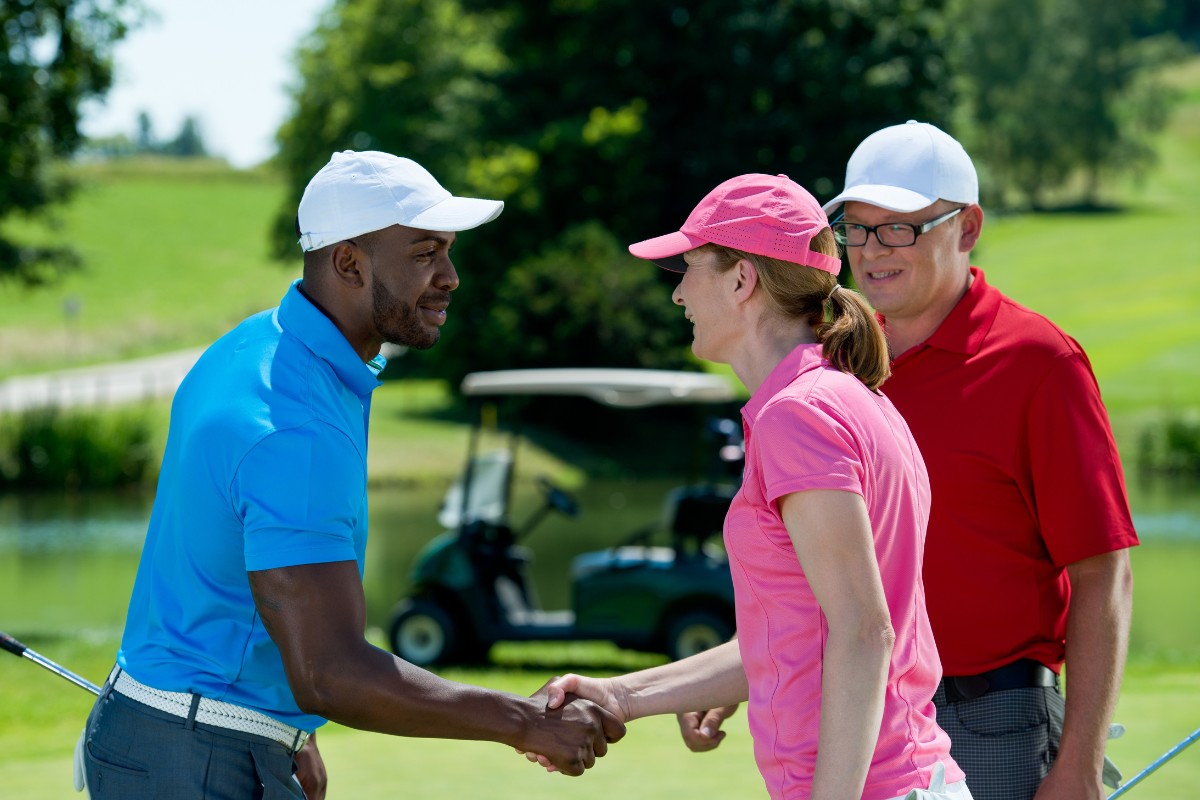The Mystery of the Hips
The middle section of the body provides for a lot of discussion in golf. Although there are hoards of questions that students pose on the lesson tee, the topic of hips is one that always results in a fairly lengthy conversation. There seems to be a lot of confusion between what a person feels and what they are actually doing with their hips. If I posed the question “Should your hips turn or slide in the golf swing?” to 10 students in a day, I’m likely to get 10 different answers. This area of our body holds our organs, is the center of our “chi” or life force from ancient arts and it is the key to power in our golf swing.
Keep Your Butt Back
Our hips can provide either stability or instability and they are designed to rotate. When we set the hips in a good position at address, they are more likely to stay there and provide a stable base throughout the swing. This means we will be able to stay in balance while rotating the body with force and not torque our lower backs and end up with an injury. When we start with the hips in a poor position or move them out of position as we swing, the entire golf swing becomes unbalanced, unstable, less powerful and we become more prone to injury. An important key in the set up is to bend from the hips, not the gut. This means we are essentially sticking our rear end out. Keeping the rear end out or back throughout the swing helps us maintain posture and rotate creating speed. If the rear end comes in (commonly called early extension or pelvic push), the spine will straighten and it is difficult to turn or create rotational force.

Ba Boom Go the Hips
The proper motion for the hips is a rotation on the backswing of anywhere from 42-45 degrees for good players without any lateral motion followed by a slide/turn combo on the downswing. If you are all slide, the result will be less speed due to lack of rotational force and typically either a push or a severe hook if you are quick to catch up with your hands. If you are all turn or spin, chances are you will leave your weight on your back foot as well resulting in fat shots, topped shots and some over the top pull-slices.
A great way to remember the proper hip motion is the say “Ba Boom” as you come through the ball. The “Ba” is the little bit of lateral motion that you need towards the target and the “Boom” is the rotation towards the target. How much slide should you have? That’s debatable and depends on other factors in your swing and your timing, but just enough to get your weight on your front foot is generally all anyone needs.
Ba Boom eventually should not really feel like 2 separate moves, but rather, they should blend into one fluid motion that shifts our weight and turns your stomach towards the target.
Strong Hip Abductors = the Secret to Power

For the last decade or two, the big fitness buzz in golf has been to “strengthen the core.” It’s been everywhere with top instructors, physical therapists and fitness trainers all preaching core, core, core. Interestingly enough though, recent information has come out that shows how very important the legs are for power in the golf swing reminiscent of what was taught in the old days. Well, fads do circle around in life that’s for sure!
In a Golf Digest article in June of 2007 written by Max Adler, it was noted that the Director of the Neuromuscular Research Lab at the University of Pittsburg Medical Center, Dr. Scott Lephart said “Immediately before impact, stress equal to two to three times the golfer’s body weight is placed on the hips.” On average, according to Adler, “Lephart found elite players to be 30 percent stronger in the hip abductors. The balance and trunk stability provided by the hips is often overlooked in golf.” The muscles of your legs and glutes are responsible for moving your hips so those are muscles that you definitely want to keep in shape and strengthen, particularly the hip abductors. Without strength in those muscles, your posture would be unstable and your ability to rotate would be compromised.
Know When to Slow
Even though we use the hips and lower body for power and initiate the dowsing with them, there comes a point when they need to slow up to allow the upper body to catch up and release. The correct kinematic sequence (order of unwinding body parts through the ball) is crucial to power and timing. After the hips start to unwind, they then need to slow, allowing the shoulders to fire. As the shoulders start to slow, the energy is transferred into the arms, then hands and then finally the club. As each body part slows down, it essentially causes another to fire and speed up.
You’ve probably all witnessed a swing where someone unwinds their hips too much (even past the target) and it has the appearance that they are just spinning in a circle without ever having that snap or release of power at the ball. It should be almost like your hips slam into a wall and BOOM, all your energy is released through your upper body and into the club.
Understanding the crucial role of the hips in the golf swing can help you add power and stability to your swing while at the same time having a protective effect on your back.






